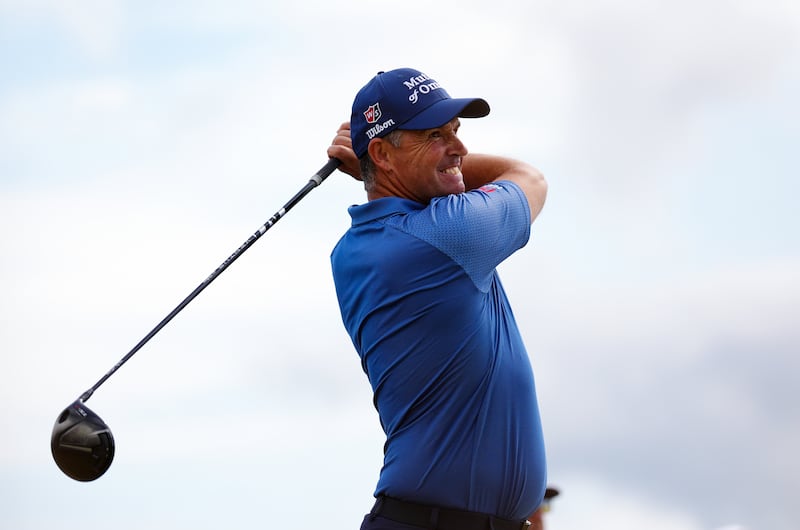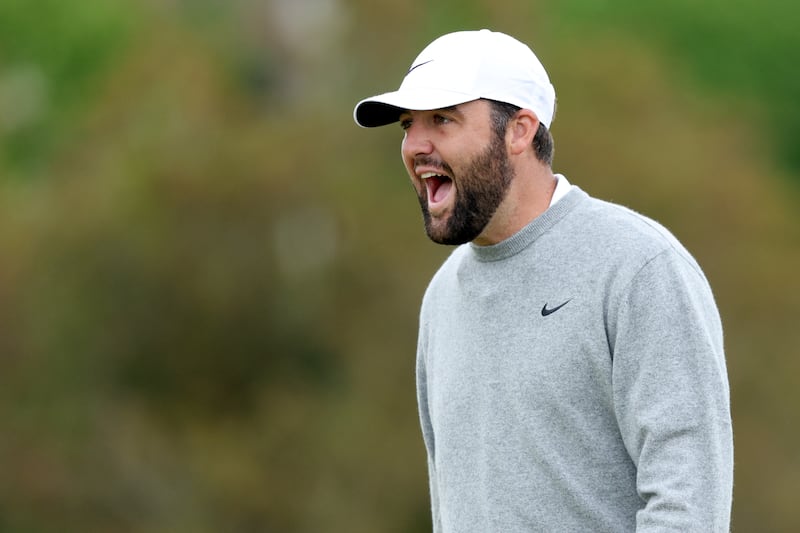So, can he? Of course. But, will he? For Rory McIlroy, this 152nd Open – his 15th – will enable him to provide his own answers on a links by the Firth of Clyde that, traditionally, has asked numerous questions of would-be conquerors and, coming in jig time since his US Open travails of last month, also offers a chance to find quick redemption for those failings.
In the pre-championship build-up days, McIlroy has looked relaxed yet focused on the task at hand. No longer, however, is it his failure to win a Major in a decade that is the elephant in the room, rather it is how he responds to what happened to him in Pinehurst. What kind of mental scarring? How deep? If any?
“You can’t win unless you put yourself out there and he obviously should feel good about his game and where he’s at,” observed Pádraig Harrington of McIlroy, adding: “He’s playing great. It’s a numbers game. Get yourself in contention as often as possible and then you will win some.”
McIlroy, for sure, has managed to get into position in many a Major since his last of four career wins, which came in the 2014 US PGA. But time hasn’t been his friend in the interim, each year passing and building more questions and piling on more pressure.
READ MORE
Pressure? None of it was in evidence on a final day of practice. McIlroy played the back nine – along with Tom McKibbin, Ryan Fox and Min Woo Lee – and kept his promise to those youngsters seeking his autograph by stopping for a long time by the 18th on finishing. Joking with them, smiling with them and all the time signing, signing, signing. Flags. Caps. Whatever.
McIlroy has been brutally honest about getting back into the right head space following his US Open loss to Bryson DeChambeau.

Brutally honest, too, about how he has put himself into the mix on those Major Sundays.
“One thing that I’ve done a really good job of over the past three or four years in the Majors is I’ve been willing to have my heart broken because I’ve put myself out there. I’ve let myself be vulnerable and let myself get to that point, basically, of no return,” said McIlroy.
That numbers game, of course, doesn’t just apply to McIlroy. Of the 158 players in the field – two more than planned – each one has a personal target. For many, it’s about laying claim to the Claret Jug. For others, the amateurs, including Galway’s Liam Nolan, it is an eye on the silver medal as leading amateur. For a few, it’s about trying to make the cut.
[ Rory McIlroy finally catches up with Tiger Woods’s US Open message of supportOpens in new window ]
McIlroy is one of six Irish players – along with Harrington, McKibbin, Nolan, Shane Lowry and Darren Clarke – and a strong likelihood that a few will be in the mix.
Harrington, at 52, still has ambitions. Rightly so, indeed. Although his wins of late have come on the Champions Tour, a return to The Open, to links, is playing to his strengths.
“I wouldn’t be working as hard or trying as hard if I thought I was coming here to make up the numbers. It is a bit of a long shot, but I see some good things in my game,” said the Dubliner, adding: “You are going to get some bad breaks this week and you’ve just got to roll with it and make the right choices. So, there is a lot more to do with experience when you come to a links golf course and length has less to do with it.”

And Lowry, who again went out for his final holes of practice in the company of Harrington, also carries his own expectations. Strong ones.
The links is pristine. The rough is up, heavy and ready to punish waywardness. The bunkers are to be avoided at all costs, although the R&A – after last year’s experiences at Hoylake – have reverted to the traditional sloping off the faces.
The greens, given a forecast of winds that will be consistent but not reaching anything like gale force, have been speeded up a tad. The forecast shift in wind direction will probably make the back nine, including the tough par-four 11th by the railway, play slightly easier.
The examination will ask many questions, getting into the heads of players. There is the longest hole in Open history – the par-five sixth, known as Turnberry – which will play to 623 yards. Then, there’s the Postage Stamp, the par-three eighth that will range from 99 yards to 123 depending on the tee.
Scottie Scheffler, the world number one and Masters champion, is a fan: “It’s great. I get frustrated sometimes when the solution to distance is just making holes further and further, and then it only just encourages guys to try to hit the ball further and further and not worry as much about controlling your ball. Number eight is a good little way to almost step back in time.”
Scheffler – and his unique shuffle – will again be the one to beat. Xander Schauffele, the US PGA champion, and DeChambeau, the US Open champion, will be other Americans seeking to conquer Troon, which has been a happy hunting ground for the transatlantic visitors (providing six of the previous nine Open champions on the links).
McIlroy, once again, will be aiming to ensure there won’t be an American clean sweep of the Majors this year.
Can he?
Yes.
Will he?
Redemption would be sweet if so.
- Sign up for push alerts and have the best news, analysis and comment delivered directly to your phone
- Join The Irish Times on WhatsApp and stay up to date
- Listen to our Inside Politics podcast for the best political chat and analysis














